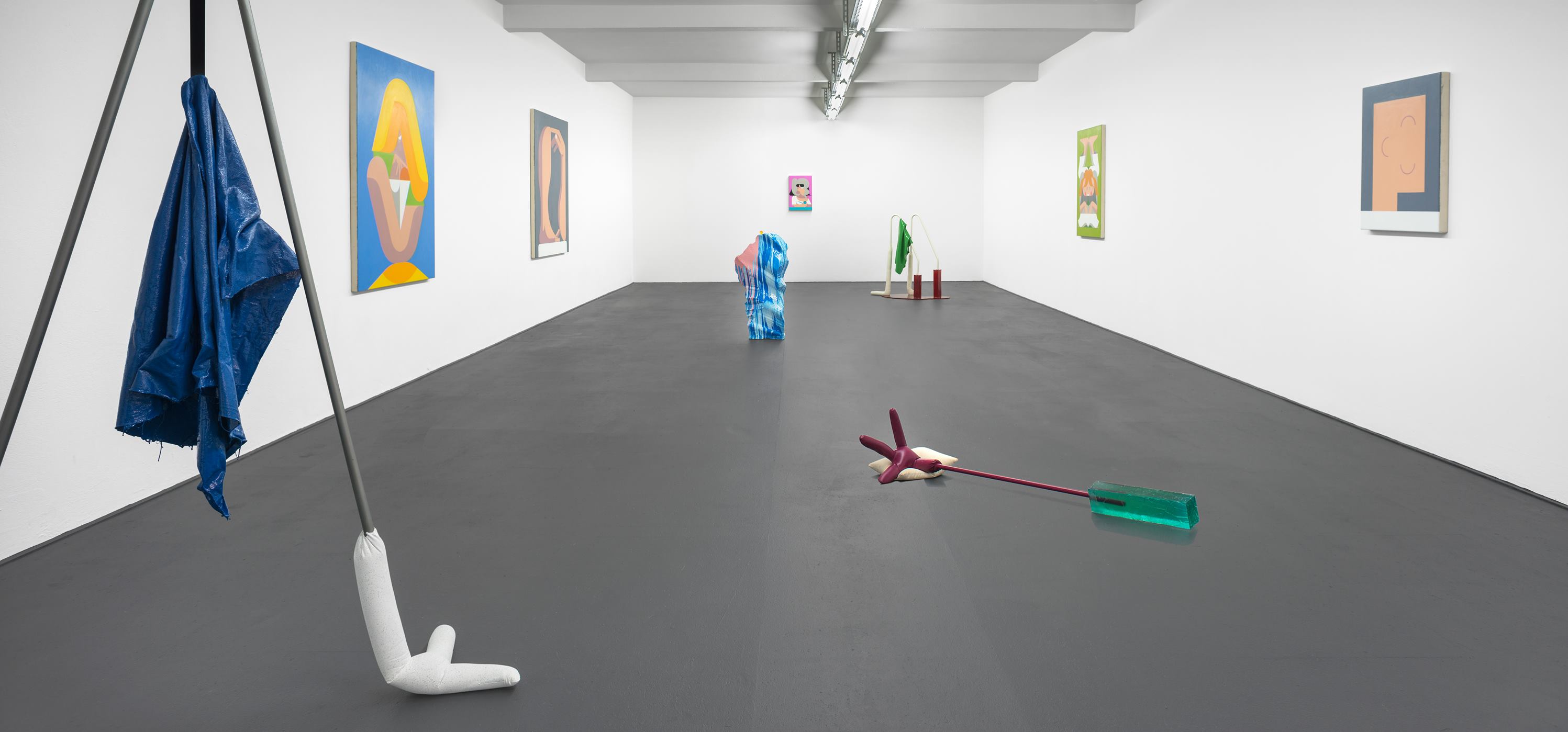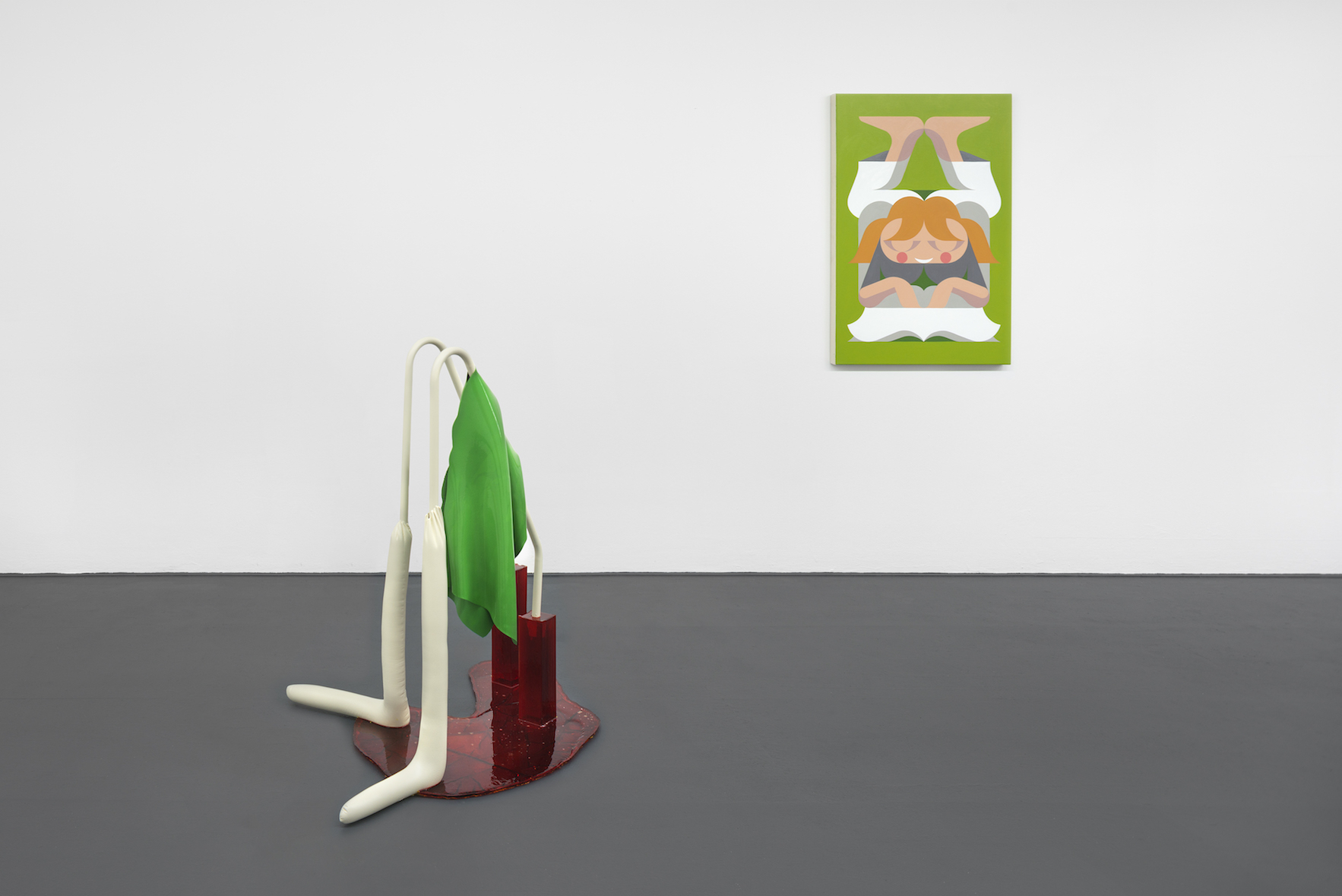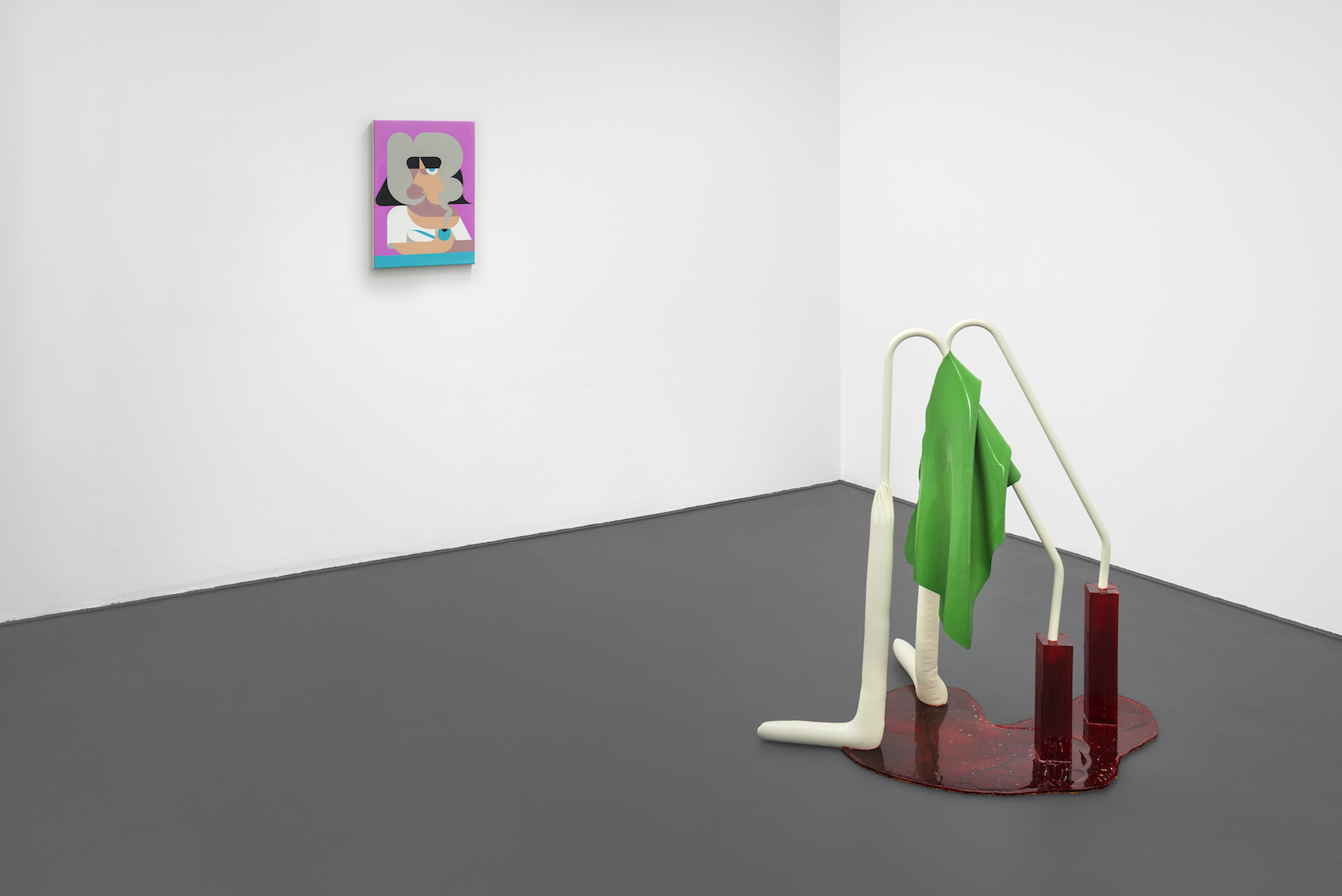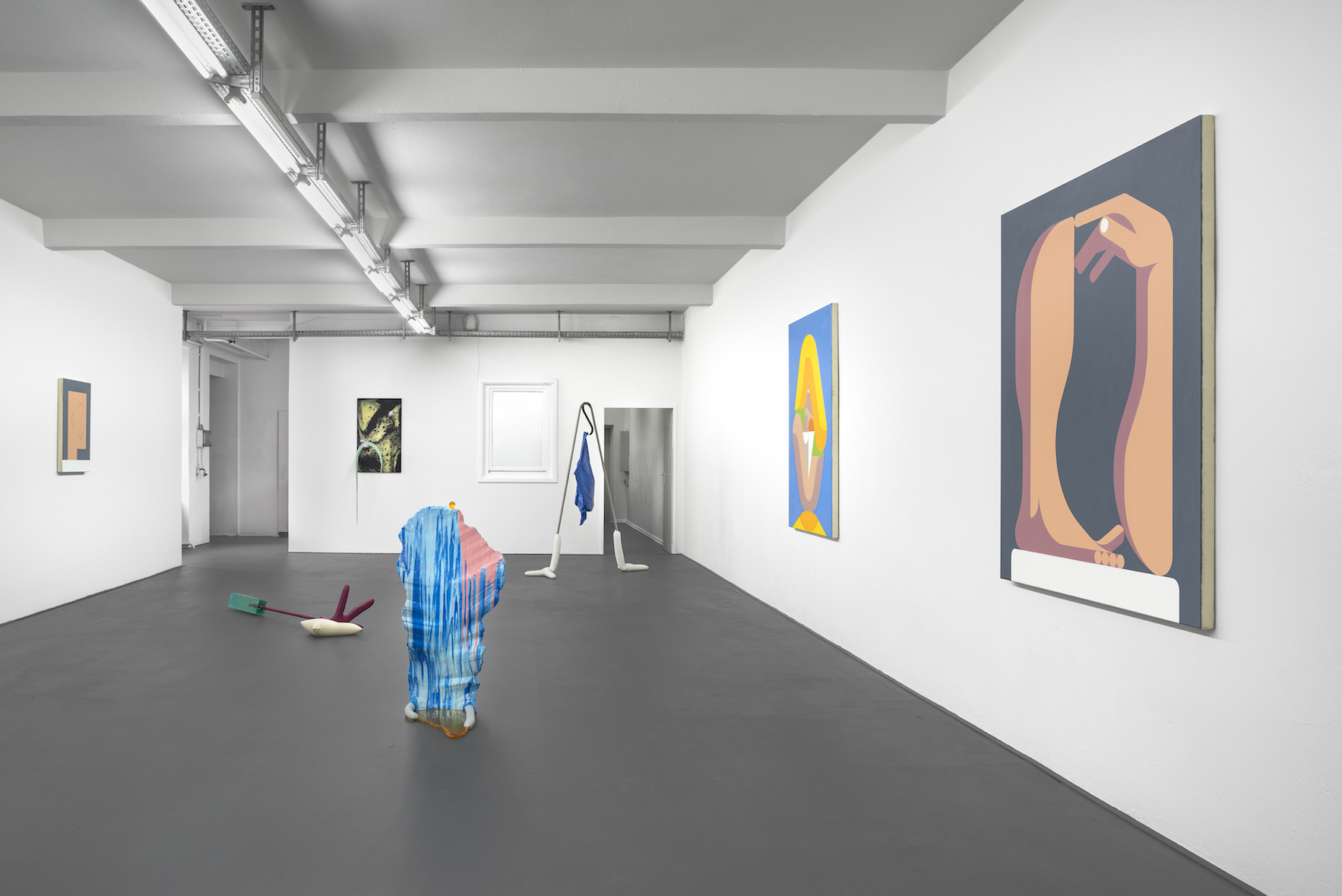CHRISTOPHER FÜLLEMANN & LEONHARD HURZLMEIER
IMAGES
INFO
*HURZLMEIER/FÜLLEMANN*
Opening: September 15, 6-9p.m.
Duration: September 16 - October 27, 2017
HURZLMEIER/FÜLLEMANN: A Manual
Text by Karim Crippa
Opening: September 15, 6-9p.m.
Duration: September 16 - October 27, 2017
HURZLMEIER/FÜLLEMANN: A Manual
- Look at the room.
- Try not to immediately create a connection between the sculptures and the paintings. Understand them as single entities.
- Look better.
- Accept the instinctive shallowness of your judgment. Observe the basics of visual arts you’re confronted with: the colors, the shapes, the formats, the volumes.
- Imagine a shy dog walking around the room. The dog comes up to you and from maybe half a meter, he starts sniffling your knee, then walks away to another corner of the gallery.
- While looking at the exhibition, imagine a dancer taking over the dog’s role. A Martha Graham type athlete, all sinewy muscles and edgy bones. He dances around with poise and energy.
- Think of your mom, or your sister, or your girlfriend, your wife, your grandma in a various set of situations. Hugging you, shouting, laughing, gazing out of a window.
- Pick a single painting, observe it closely and contract your buttocks for 20 seconds while doing so.
- Exhale.
- Picture a medieval type of throne, possibly covered in gold leaves. Something byzantine, royal.
- Approach a sculpture of your choice and sit in front of it.
- Try to recall the sound of an oboe. Its roundness, heft, smooth intensity.
- Get up quickly, and sit down again. Repeat if you feel like it.
- Imitate the dog you imagined previously and walk around the room sniffling and furtively looking at the works.
- Imagine the taste of raw pigment.
- imagine the taste of rust and metal shavings.
- Think of an embarrassing sexual encounter you had. One you didn’t really tell your friends about because of the sheer oddness you experienced.
- Think of the opposite. The most carnal, symbiotic, wild fuck of your life.
- Close your eyes for 20 seconds and reflect upon how weird it is to actually close your eyes in an art gallery.
- Look again!
- Try to calculate the amount of sweat that was produced by the artists during the production of these paintings and sculptures.
- Fold the paper you’re holding in your hands in two. Let it fall on the floor and pick it up.
- Unfold the paper.
- Feel your thirst.
- Think of caressing a big couch covered in purple velours.
- Imagine the works on view having a real human voice, but only whispering unintelligible sentences at great intervals.
- Remember your favourite book; the sound of a turning page; the sound of an egg cracking.
- Hold your breath for 20 seconds; exhale.
- Observe other forms of life in the gallery; flowers, humans, a fly, whatever’s there.
- Try to remember a moment where someone caught your attention in a public space; try to remember how you observed that person.
- Figure out whether at school, you liked geometry or not.
- Take a break.
- Feel your feet, wiggle your toes.
- Stand still and move as little as possible.
- Frown.
- Imagine the works on view having real human eyes, but only occasionally and quickly looking at each other.
- Think about chemical transformations: evaporation, solidification, sublimation, liquefaction.
- Slowly bend your knees and while doing so, imagine gripping a part of the biggest sculpture in the room with a firm hand while looking at it.
- Take off your shoes.
- Erase points 1 to 39 from your memory, put this paper away, and look again.
Text by Karim Crippa
Christopher Füllemann (*1983, CH) builds sculptures both familiarly strange and strangely familiar. He views himself as a guide to the materials he uses, which range from foam to fabric, metal or concrete. Füllemann doesn’t shy away from letting “accidents” happen to his pieces, allowing him to progress towards unexpected results and reconsider his work from new perspectives. Forms reminiscent of limbs are often included in his works, quoting from figuration and infusing them with a subtle blend of humor. With a background in painting, his pieces are stations on a road towards understanding and taming the essence of materiality; focused on capturing this essence, as well as gestures and light, Füllemann ultimately aims for the (re)invention of a new sculptural grammar.
Leonhard Hurzlmeier’s (*1983, DE) paintings show humanoid beings, mostly female, wherein geometrical elements of extreme flatness form constructions of flesh and fabric. The subjects of his paintings allude to historical representations of women in the arts; at the same time, they often represent contemporary female personae from everyday life. Behind these seemingly harmless images lies an inherent questioning of both our perception of art and women in society. Hurzlmeier spends weeks on every layer of paint he applies, ending up with iconographies both obviously recognisable and strangely foreign. The tight frame, the play with abstraction, the dislocation of the body, the glossiness and regularity of the paint all lead up to a critical confrontation with current and past aesthetics, topical duplicity and complex visual codes.
Leonhard Hurzlmeier’s (*1983, DE) paintings show humanoid beings, mostly female, wherein geometrical elements of extreme flatness form constructions of flesh and fabric. The subjects of his paintings allude to historical representations of women in the arts; at the same time, they often represent contemporary female personae from everyday life. Behind these seemingly harmless images lies an inherent questioning of both our perception of art and women in society. Hurzlmeier spends weeks on every layer of paint he applies, ending up with iconographies both obviously recognisable and strangely foreign. The tight frame, the play with abstraction, the dislocation of the body, the glossiness and regularity of the paint all lead up to a critical confrontation with current and past aesthetics, topical duplicity and complex visual codes.







